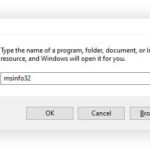When you’re in the midst of baking a delicious cake or whipping up a flavorful sauce, accurate measurements are key to success. Recipes often call for ingredients measured in teaspoons, but for precision, especially in baking, grams are often preferred. So, the burning question arises: how many grams are in a teaspoon? Let’s dive into the world of kitchen conversions to unravel this common culinary query and ensure your recipes turn out perfectly every time.
While a teaspoon is a unit of volume, grams measure weight. This distinction is crucial because the weight of a teaspoonful varies significantly depending on the ingredient’s density. A teaspoon of feathers will weigh far less than a teaspoon of salt, for example. Therefore, there isn’t a single, universal answer to “how many grams in a teaspoon” that applies to all ingredients.
However, for water, which is often used as a standard for volume measurements, a teaspoon is approximately 5 milliliters (ml), and 1 milliliter of water weighs approximately 1 gram. Thus, as a general rule of thumb, you can often say that 1 teaspoon of water is roughly equal to 5 grams.
But, as we’ve established, water is not flour, sugar, or baking powder. For baking and cooking, it’s essential to understand that the gram equivalent of a teaspoon will differ based on the ingredient. Let’s explore some common baking ingredients and their approximate teaspoon to gram conversions:
Teaspoon to Grams Conversion for Common Baking Ingredients:
- Granulated Sugar: A teaspoon of granulated sugar is approximately 4 grams.
- Powdered Sugar (Icing Sugar): Due to its finer texture and airiness, a teaspoon of powdered sugar is lighter, around 3 grams.
- Brown Sugar: Brown sugar, especially if packed, can be a bit heavier. A teaspoon is roughly 4-5 grams, depending on how firmly packed it is.
- Salt: Salt, particularly table salt, is denser. A teaspoon of salt weighs about 5-6 grams.
- Baking Powder: A teaspoon of baking powder is around 3-4 grams.
- Baking Soda: Similar to baking powder, a teaspoon of baking soda is approximately 4-5 grams.
- Spices (Ground): The weight can vary greatly depending on the spice and how finely ground it is. Generally, a teaspoon of ground spice is in the range of 2-4 grams. Think cinnamon, cumin, or paprika.
- Extracts and Liquids (Vanilla, Oil, Milk): Similar to water, these liquids are close to 1 gram per milliliter. Therefore, a teaspoon of vanilla extract, oil, or milk is approximately 5 grams.
- Honey and Syrups: These are denser than water. A teaspoon of honey or syrup can be around 7-8 grams.
- Butter: A teaspoon of melted butter is approximately 5 grams.
Why Grams Offer Superior Accuracy in Baking:
While teaspoon measurements are convenient, they are based on volume, which can be inconsistent. Factors like how level or heaped your teaspoon is, and the density of the ingredient, directly impact the actual amount you’re using. This is where grams, a unit of weight, provide a significant advantage, especially in baking:
- Consistency: Weight is consistent regardless of how you scoop or pack an ingredient. 10 grams of flour is always 10 grams of flour.
- Precision: Baking is a science. Small variations in ingredient quantities can affect the final outcome of your baked goods – texture, rise, sweetness, etc. Measuring in grams allows for much finer adjustments and more predictable results.
- Recipe Scaling: When scaling recipes up or down, gram measurements are far easier to work with accurately compared to volume measurements.
Tips for Accurate Teaspoon Measurements (If You Must Use Them):
If your recipe only provides teaspoon measurements and you don’t have a kitchen scale handy, here are tips to improve accuracy:
- Use Standard Measuring Spoons: Invest in a set of standard measuring spoons. Household teaspoons can vary in size.
- Level, Don’t Heap: Unless the recipe specifically says “heaped teaspoon,” always level off dry ingredients with the back of a knife or a leveling tool.
- Lightly Spoon Flour: For flour, avoid scooping directly from the bag, which compresses it. Instead, lightly spoon flour into the measuring spoon and then level it.
Quick Conversion Table for Teaspoons to Grams (Approximate):
| Ingredient | Approx. Grams per Teaspoon |
|---|---|
| Water/Liquids | 5 |
| Granulated Sugar | 4 |
| Powdered Sugar | 3 |
| Brown Sugar | 4-5 |
| Salt | 5-6 |
| Baking Powder | 3-4 |
| Baking Soda | 4-5 |
| Ground Spices | 2-4 |
| Honey/Syrups | 7-8 |
| Melted Butter | 5 |
Conclusion: Embrace Grams for Baking Success
While knowing the approximate gram equivalent of a teaspoon is helpful for quick estimations, for truly reliable and repeatable baking results, especially when precision is paramount, using a kitchen scale and measuring ingredients in grams is highly recommended. It eliminates guesswork, reduces errors, and empowers you to bake with confidence, knowing your measurements are accurate every time. So, while the answer to “how many grams in a teaspoon?” is nuanced, the best approach is to move beyond teaspoons and embrace the accuracy of grams in your culinary adventures.
